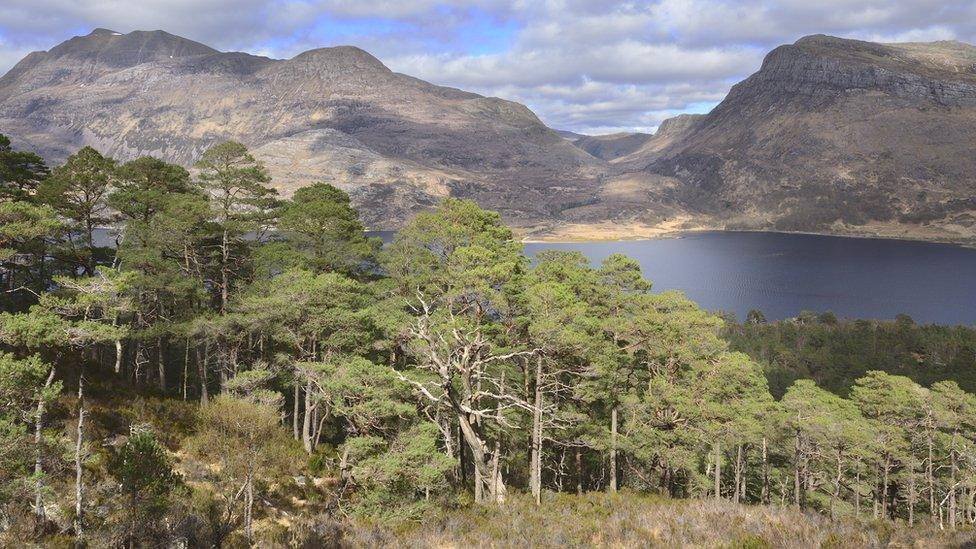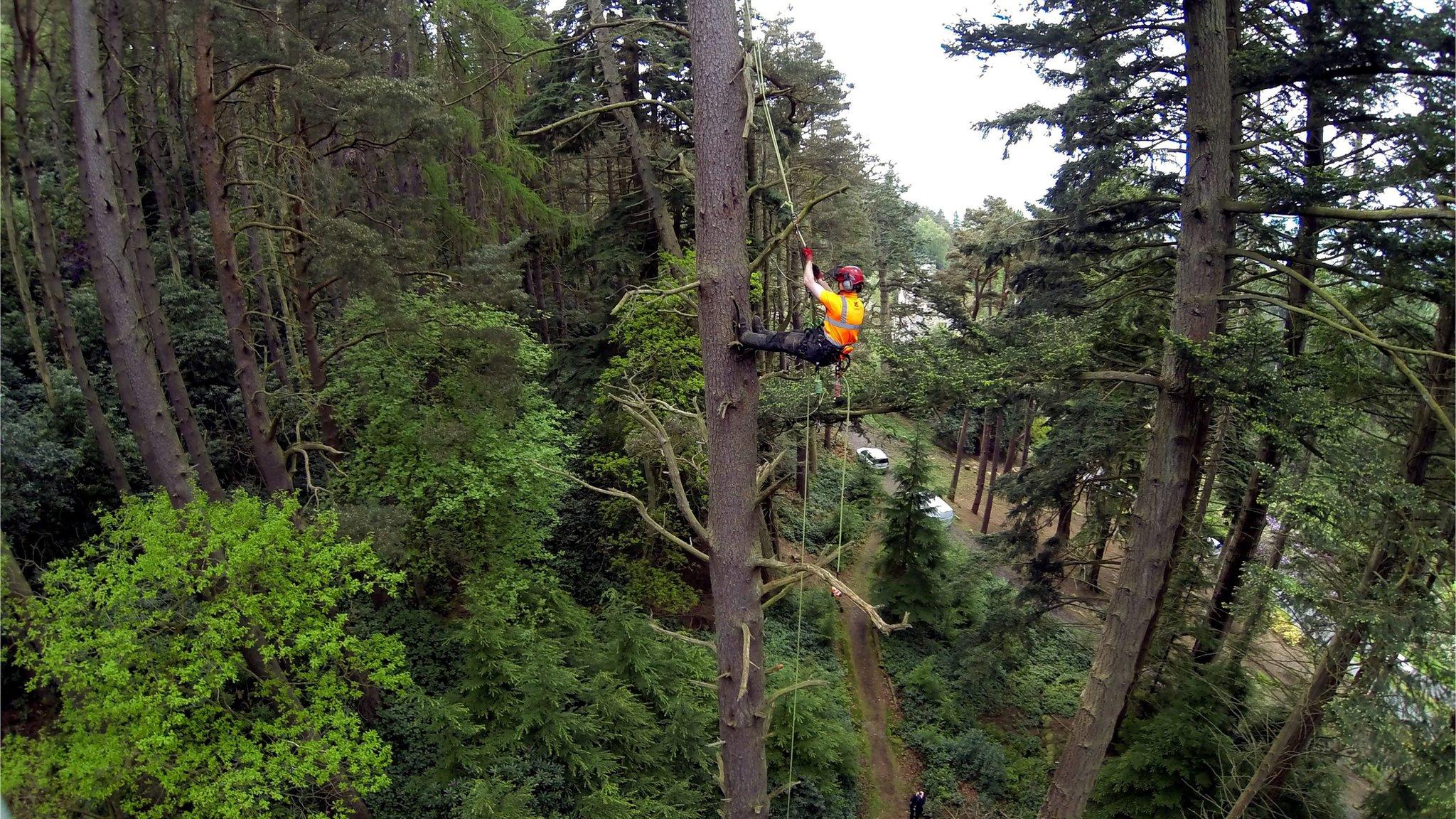Tree grafting bid to preserve unique Scots pine DNA legacy
- Published

Gale force winds brought the tree down in November 2021
Experts are harvesting shoots from unique pine trees after one of the last of its kind was uprooted in Storm Arwen.
The 110-year-old Scots pine in Williams Cleugh, Northumberland, was one of seven thought to be the only remnants in England of post-glacial pinewoods.
Specialists are now collecting shoots from it, and the remaining trees, to graft on to saplings.
The aim is to conserve the DNA of the last population for future generations.

Conservationists described the tree - pictured here before it fell - as iconic
Scots pine were once widespread throughout the British Isles, but now Scots pine forests are restricted to the Scottish Highlands.
The Williams Cleugh cluster was discovered in 1955 during a survey for the then Forestry Commission.
At that time, there were eight but one died a few years ago, and another fell victim to Storm Arwen in November 2021.
A five-year project - Kielderhead Wildwood - is now under way to create an upland broadleaf and Scots pine woodland next to that location.
The project is managed by Northumberland Wildlife Trust and Forestry England, and has been awarded funding from the National Lottery Heritage Fund.
Grafting involves binding one of the shoots on to another sapling and then when the shoot has taken, or proved viable, it is removed from the "nursery tree" and planted out.
However, as it is a costly process - about £12 for each new tree - there is also an appeal for donations from members of the public.

Shoots are also being taken from trees which are standing
Natasha Hemsley, from Northumberland Wildlife Trust, said: "We were all so upset that the tree has fallen.
"The whole reason for the project was to prevent the loss of the pines and conserve the DNA from the last population of such an iconic tree.
"But, by grafting and replanting, the legacy of the pines is set to live on, so please help us if you can."

Follow BBC North East & Cumbria on Twitter, external, Facebook, external and Instagram, external. Send your story ideas to northeastandcumbria@bbc.co.uk, external.
Related topics
- Published20 March 2019

- Published2 June 2014
